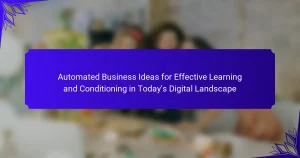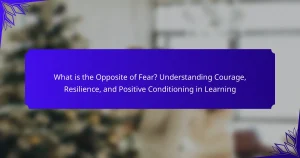Navigating competitive expectations in modern learning environments presents significant challenges for educators and students alike. Key issues include technological integration, diverse learner needs, and the pressure for high performance. Effective conditioning techniques and innovative teaching methodologies can enhance engagement and adaptability. Strategies such as fostering a growth mindset and utilizing differentiated instruction are essential for addressing these challenges and ensuring quality education for all.
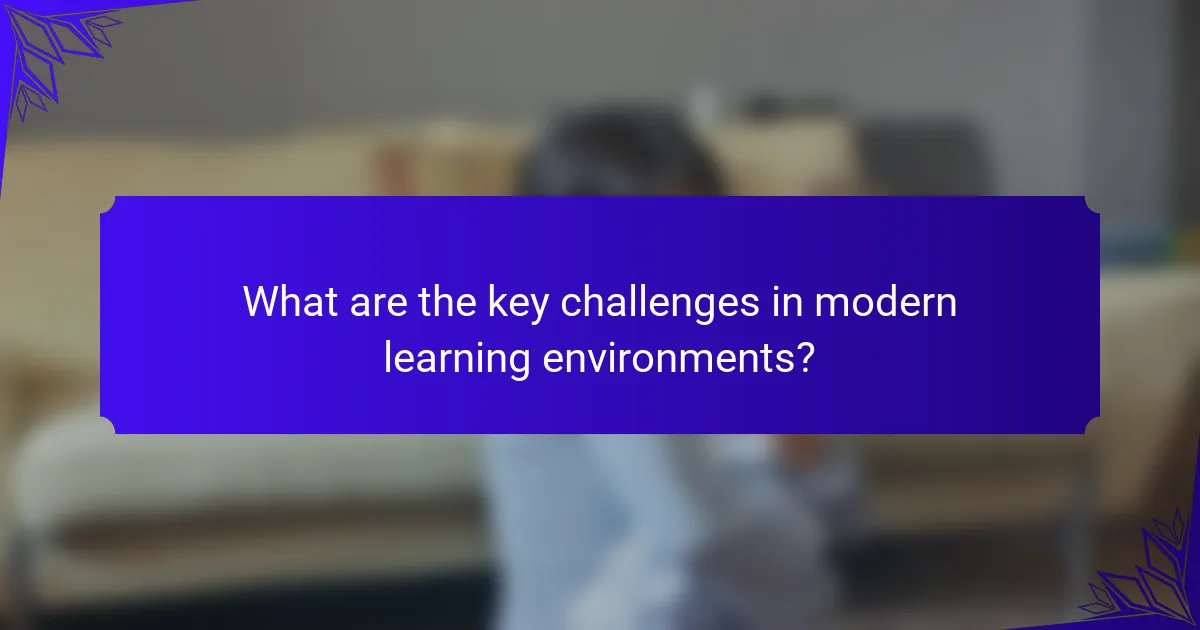
What are the key challenges in modern learning environments?
Modern learning environments face key challenges, including competitive expectations, technological integration, and diverse learner needs. These factors complicate effective teaching and learning strategies.
Competitive expectations create pressure on educators to deliver high performance, often leading to stress. Technological integration requires constant adaptation to new tools, which can overwhelm both teachers and students. Diverse learner needs necessitate personalized approaches, complicating curriculum design and resource allocation.
As a result, educational institutions must innovate continuously to meet these challenges effectively, ensuring equitable access and quality education for all students.
How do competitive expectations influence student performance?
Competitive expectations significantly enhance student performance by fostering motivation and goal-oriented behavior. These expectations create a sense of urgency and accountability, pushing students to meet or exceed academic standards. Research indicates that environments with clear competitive benchmarks lead to improved outcomes, as students strive to outperform peers. Furthermore, the application of conditioning techniques, such as positive reinforcement for achievements, can amplify this effect, solidifying a culture of excellence. Ultimately, understanding these dynamics is crucial for educators aiming to navigate modern educational challenges effectively.
What role does technology play in shaping learning experiences?
Technology significantly enhances learning experiences by providing innovative tools and resources. It enables personalized learning, allowing students to engage with materials at their own pace. Interactive platforms foster collaboration and communication among peers and instructors. Additionally, data analytics helps educators identify learning gaps and tailor instruction accordingly. The integration of virtual and augmented reality offers immersive experiences that deepen understanding of complex subjects. Overall, technology transforms traditional educational challenges into opportunities for growth and engagement.
Which digital tools enhance conditioning techniques?
Digital tools like mobile apps, wearable technology, and online platforms significantly enhance conditioning techniques. These tools provide real-time feedback, track performance metrics, and facilitate personalized training programs.
Mobile apps such as MyFitnessPal and Strava allow users to monitor their workouts and nutrition, improving accountability. Wearable technology, including fitness trackers and smartwatches, offers insights into heart rate and activity levels, promoting effective conditioning. Online platforms like Trainerize enable remote coaching, allowing trainers to customize conditioning plans based on individual progress and goals.
These digital tools not only streamline the training process but also foster engagement and motivation among users, adapting to their unique needs.
How can educators create supportive learning atmospheres?
Educators can create supportive learning atmospheres by establishing clear expectations, promoting collaboration, and fostering a growth mindset. These strategies help students feel valued and engaged.
Clear expectations set a foundation for behavior and academic performance. When students understand what is required, they can focus on learning. Collaborative activities encourage teamwork and communication, allowing students to learn from one another.
Fostering a growth mindset encourages resilience. Educators can model this by praising effort rather than innate ability, which helps students embrace challenges.
Additionally, incorporating feedback loops enhances learning. Regular assessments and constructive feedback guide students in their progress and build confidence.
What strategies foster collaboration among students?
Encouraging collaboration among students involves fostering a supportive environment, promoting teamwork, and utilizing specific strategies. Group projects enhance communication and problem-solving skills while peer feedback cultivates trust and respect. Implementing structured discussions allows diverse perspectives to emerge, enriching the learning experience. Incorporating technology tools can facilitate collaboration, making it easier for students to connect and share ideas.

What are the universal attributes of effective conditioning techniques?
Effective conditioning techniques share several universal attributes. They incorporate clear goals, consistent reinforcement, adaptability to individual needs, and measurable outcomes. These elements enhance learning and retention in various environments.
Clear goals establish a focused direction for learners, ensuring that expectations are understood. Consistent reinforcement provides motivation and encourages progress, while adaptability allows techniques to be tailored to different learning styles. Measurable outcomes enable assessment of effectiveness and guide future adjustments.
How do reinforcement principles apply to modern education?
Reinforcement principles enhance modern education by fostering motivation and engagement in learning environments. Techniques such as positive reinforcement encourage desired behaviors, while negative reinforcement helps eliminate distractions. Educators can apply these principles to address challenges like varying student needs and competitive expectations. For example, immediate feedback can reinforce learning effectively, promoting a growth mindset.
What types of feedback are most effective in learning?
Effective feedback types in learning include formative, summative, and peer feedback. Formative feedback occurs during the learning process, guiding improvements. Summative feedback evaluates performance after a learning period. Peer feedback fosters collaboration and diverse perspectives. Each type enhances understanding and retention, addressing modern educational challenges.

What unique attributes distinguish successful learning strategies?
Successful learning strategies are distinguished by adaptability, engagement, and feedback mechanisms. These unique attributes ensure learners can navigate diverse environments effectively. Adaptability allows strategies to evolve based on individual needs and contexts. Engagement fosters motivation, enhancing retention and understanding. Feedback mechanisms provide timely insights, promoting continuous improvement. Together, these attributes create a robust framework for effective learning.
How do personalized learning plans impact student engagement?
Personalized learning plans significantly enhance student engagement by catering to individual learning styles and needs. These plans foster a sense of ownership and responsibility in students, motivating them to participate actively in their education. Research indicates that students with personalized learning experiences demonstrate increased motivation and improved academic performance. Moreover, tailored feedback and adaptive resources help maintain interest and challenge levels, promoting a more dynamic learning environment. As a result, personalized learning plans address modern educational challenges by creating engaging and effective learning experiences.
What are the benefits of adaptive learning technologies?
Adaptive learning technologies enhance educational experiences by personalizing content to individual learner needs. They improve engagement, increase retention, and provide real-time feedback. These technologies can adjust the difficulty of tasks based on performance, ensuring optimal challenge levels. As a result, learners experience tailored pathways that promote mastery and confidence. The unique attribute of adaptability allows for continuous assessment, making learning more efficient and effective.
What innovative approaches are being adopted in classrooms?
Innovative approaches in classrooms include personalized learning, technology integration, and collaborative projects. These strategies enhance engagement and adaptability to diverse learning styles. Personalized learning tailors education to individual needs, fostering student autonomy. Technology integration utilizes tools like tablets and interactive software, enriching the learning experience. Collaborative projects encourage teamwork and critical thinking, preparing students for real-world challenges. These methods address modern educational challenges by creating dynamic and inclusive learning environments.
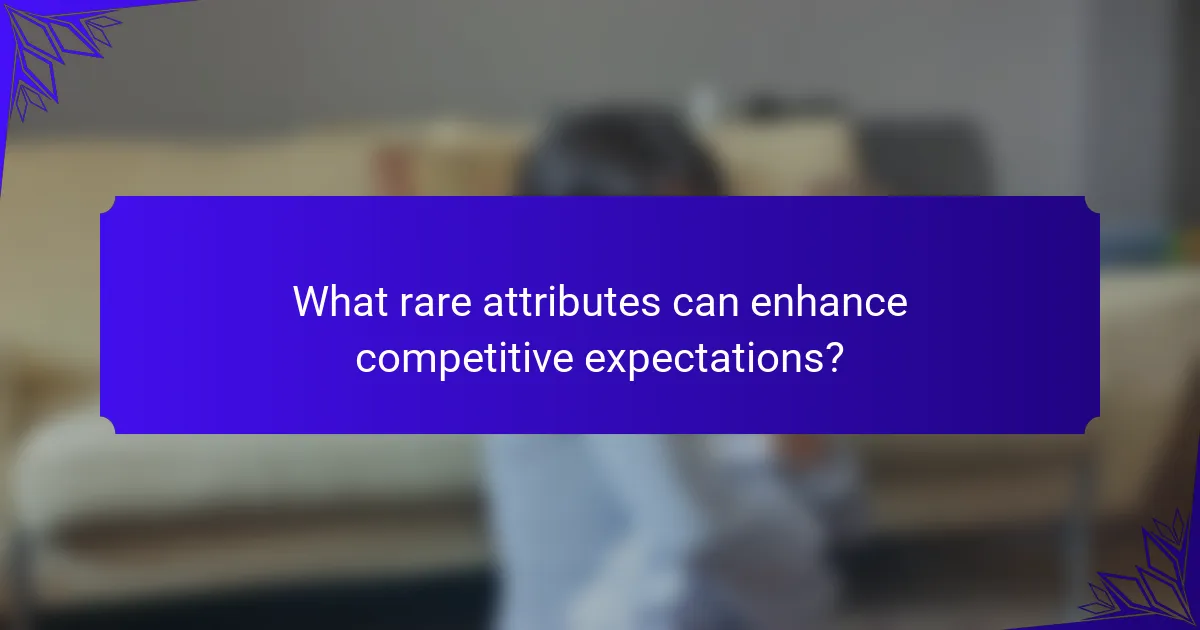
What rare attributes can enhance competitive expectations?
Innovative teaching methodologies can enhance competitive expectations. Techniques such as gamification, personalized learning, and project-based learning foster engagement and improve outcomes. These unique attributes create dynamic learning environments that adapt to student needs, promoting higher achievement and motivation. Emphasizing collaboration and critical thinking further prepares learners for real-world challenges, setting them apart in competitive scenarios.
How does emotional intelligence play a role in learning outcomes?
Emotional intelligence significantly enhances learning outcomes by fostering better relationships, improving self-regulation, and promoting resilience. Students with high emotional intelligence can navigate competitive expectations and modern educational challenges more effectively. They can manage stress, collaborate with peers, and adapt to various learning environments. This adaptability leads to improved academic performance and personal growth. Furthermore, emotional intelligence encourages a positive mindset, which is essential for overcoming obstacles in the learning process.
What unique programs support mental well-being in education?
Unique programs that support mental well-being in education focus on holistic approaches, integrating emotional intelligence and resilience training. Programs like Mindfulness-Based Stress Reduction (MBSR) enhance students’ coping skills, while Social-Emotional Learning (SEL) curricula foster interpersonal skills. Additionally, initiatives like peer support groups address mental health challenges collaboratively. These programs are essential in navigating competitive educational environments, promoting both academic success and personal growth.
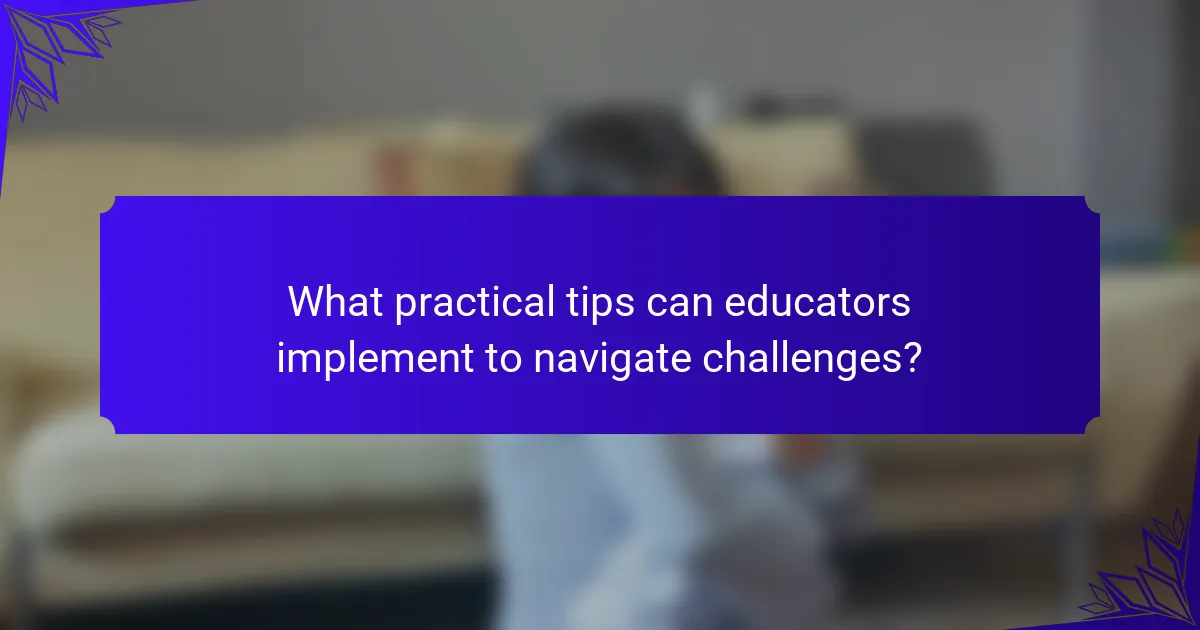
What practical tips can educators implement to navigate challenges?
Educators can implement strategies like fostering a growth mindset, utilizing differentiated instruction, and incorporating technology to address challenges. These approaches enhance engagement and adaptability in diverse learning environments.
1. Foster a growth mindset: Encourage students to view challenges as opportunities for growth.
2. Utilize differentiated instruction: Tailor teaching methods to meet individual student needs and learning styles.
3. Incorporate technology: Use digital tools to facilitate interactive learning experiences and access diverse resources.
4. Promote collaboration: Create opportunities for peer learning and teamwork to build community and support.
5. Provide timely feedback: Offer constructive feedback to guide student progress and motivate improvement.
6. Prioritize social-emotional learning: Address students’ emotional needs to create a supportive learning atmosphere.
How can teachers effectively balance competitive expectations and student well-being?
Teachers can balance competitive expectations and student well-being by fostering a supportive learning environment. Prioritizing mental health initiatives helps create an atmosphere where students feel valued. Implementing collaborative learning techniques reduces pressure and encourages teamwork. Regular feedback mechanisms allow for adjustments to teaching strategies, aligning expectations with individual student needs. Incorporating mindfulness practices can enhance emotional resilience, promoting a healthier approach to competition.
What common mistakes should be avoided in learning environments?
To enhance learning environments, avoid common mistakes that hinder progress. Key errors include setting unrealistic expectations, failing to adapt teaching methods, neglecting individual learning styles, and overlooking the importance of feedback. Recognizing these pitfalls can lead to more effective educational experiences.
What expert insights can improve conditioning techniques in education?
Expert insights can enhance conditioning techniques in education by focusing on adaptive learning strategies and personalized feedback. Implementing growth mindset principles encourages resilience and motivation among learners. Research indicates that incorporating technology, such as gamification, can increase engagement and retention rates. Additionally, fostering a collaborative environment promotes peer learning, which can lead to deeper understanding and skill development. Finally, utilizing data analytics to track progress allows educators to tailor their approaches, ensuring each student receives the support they need for optimal performance.
